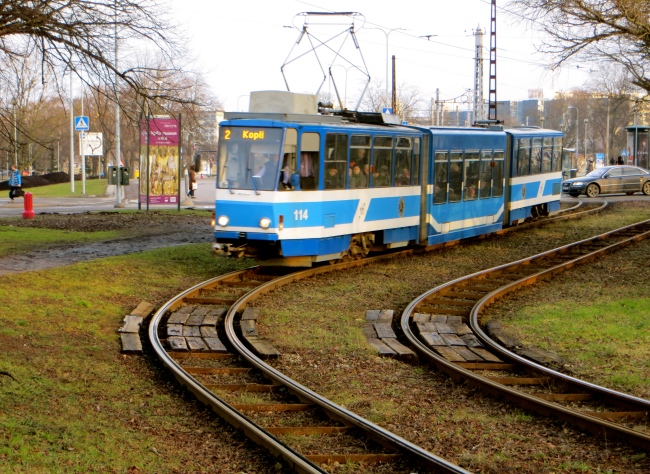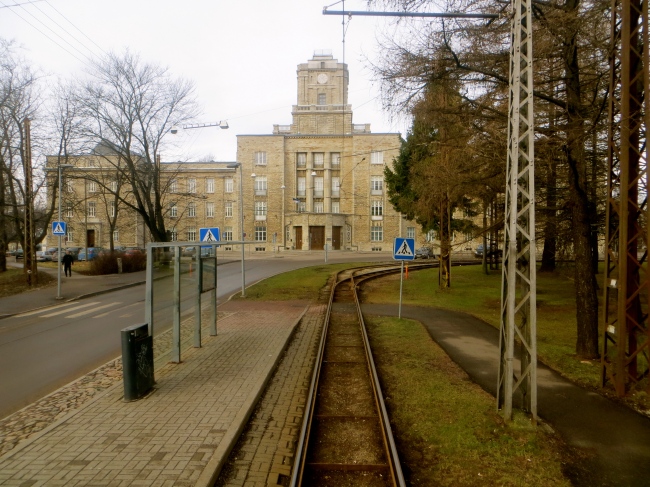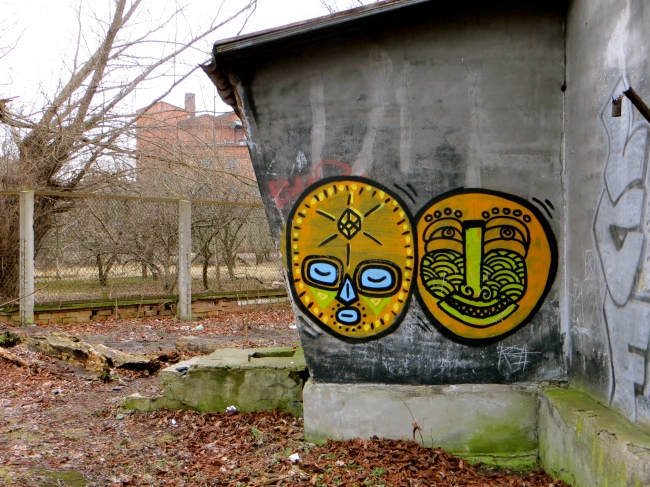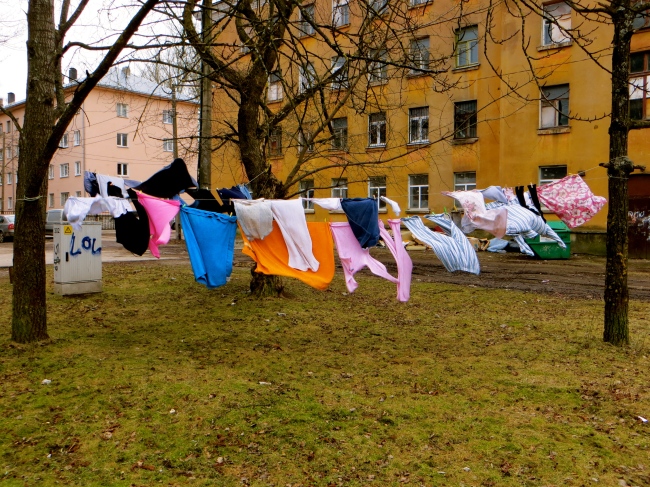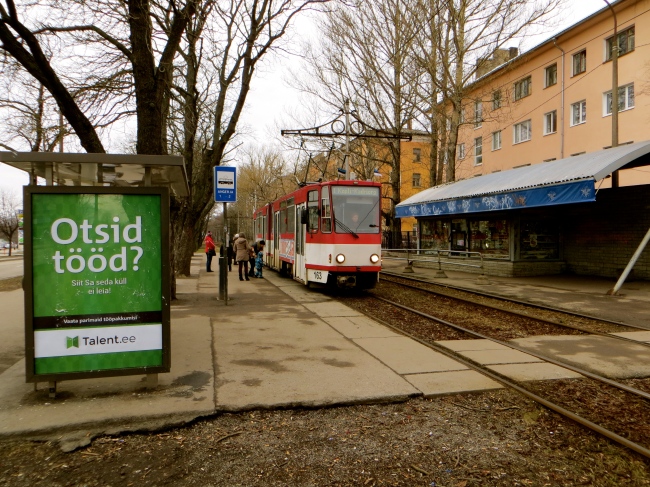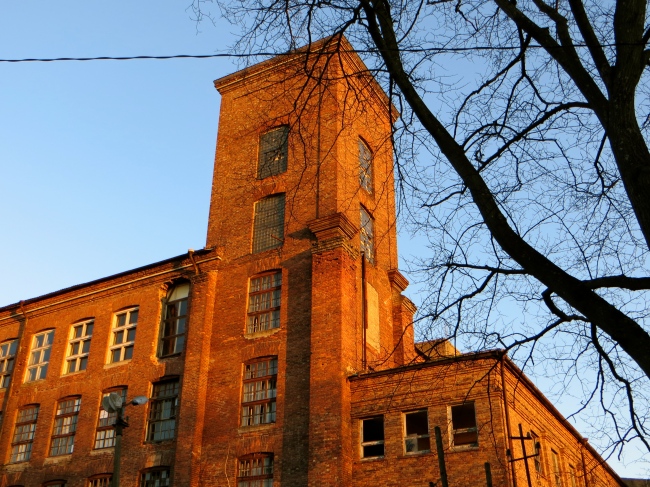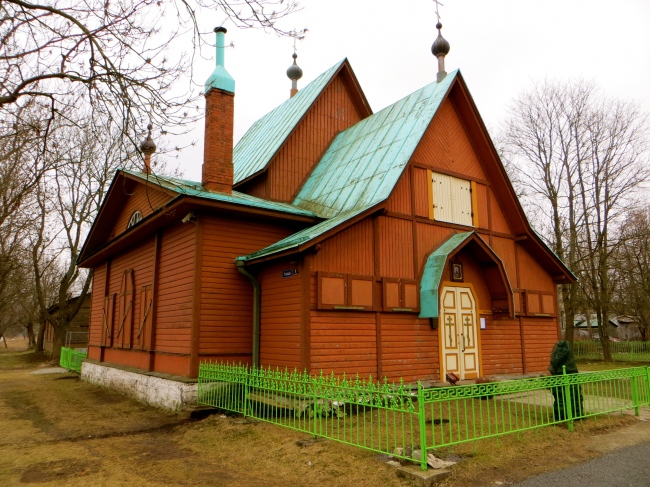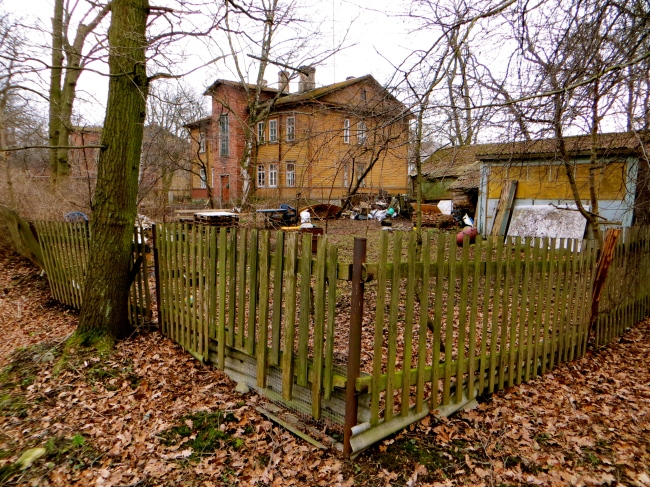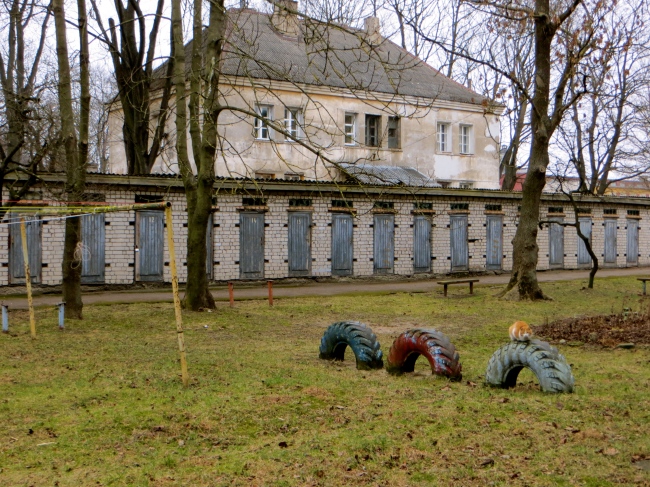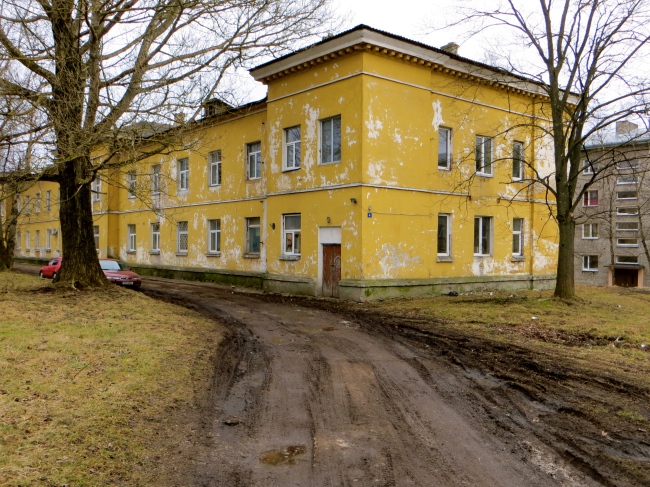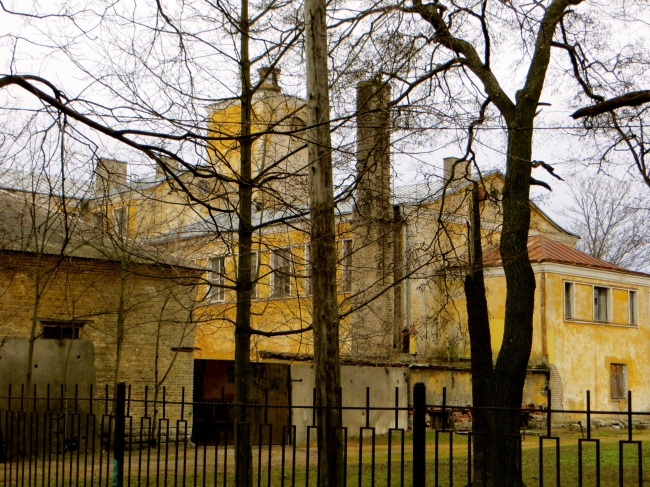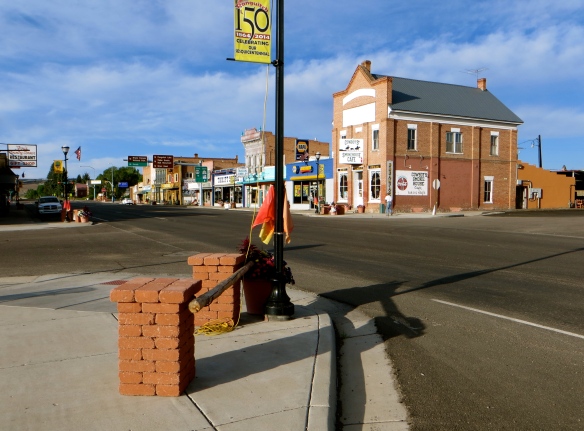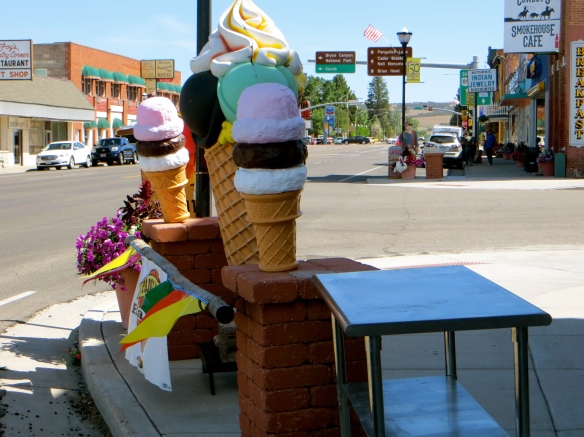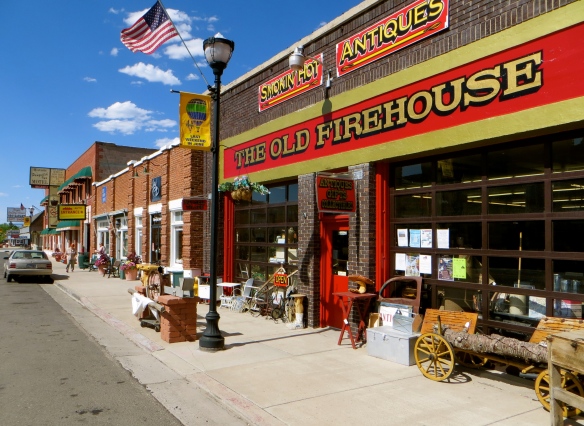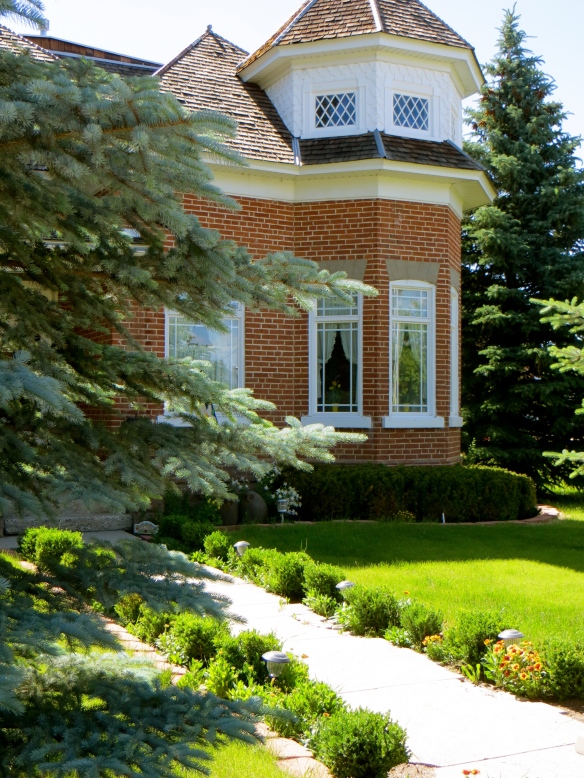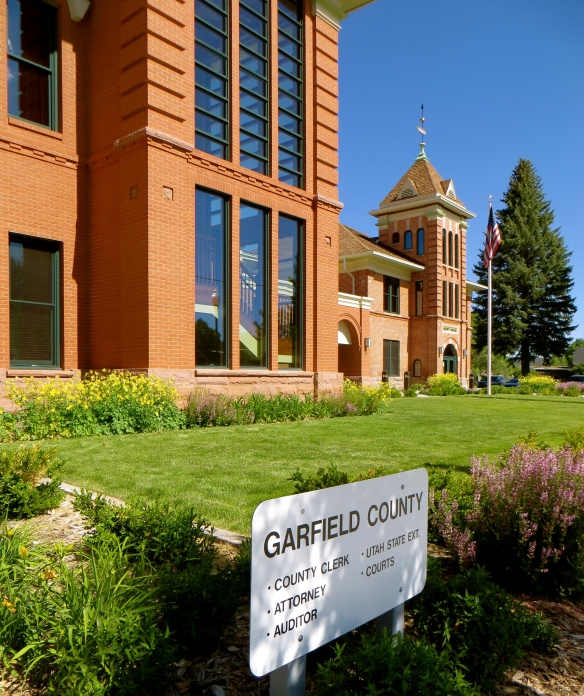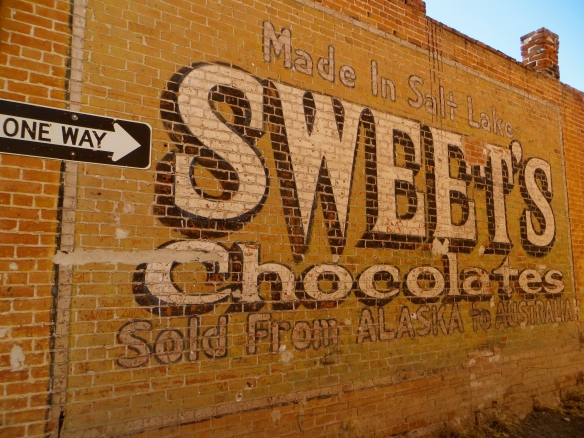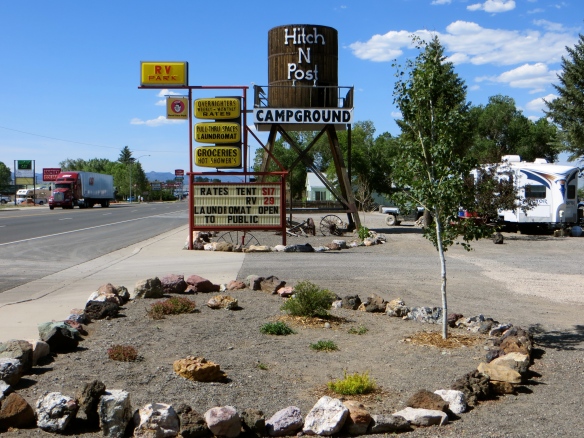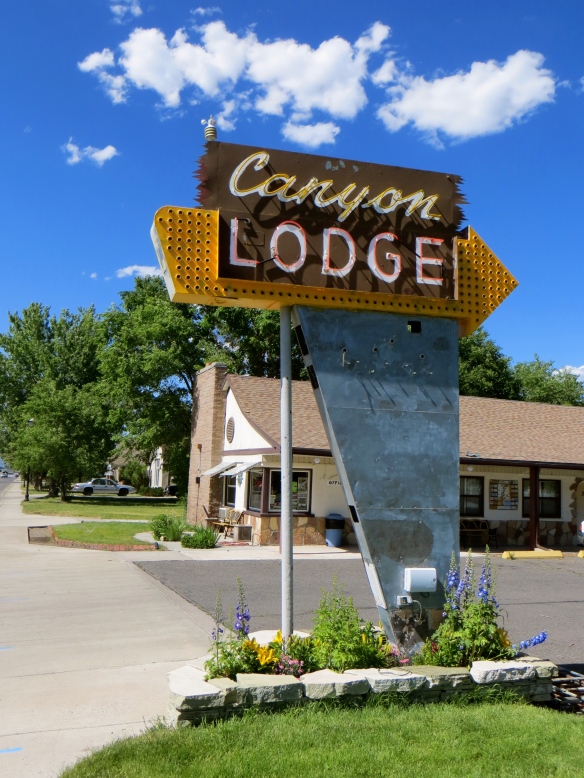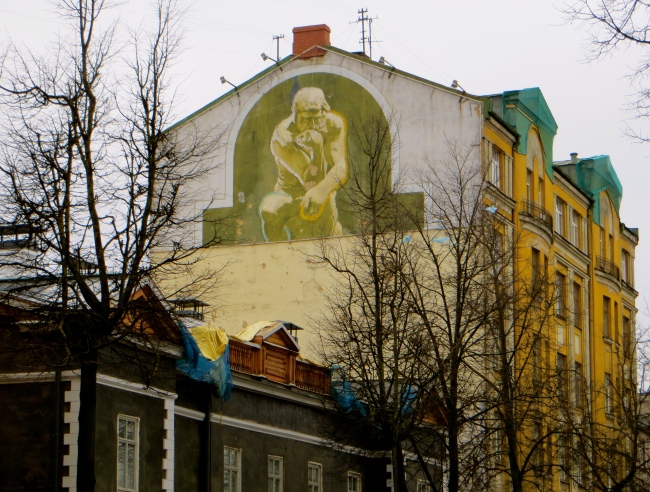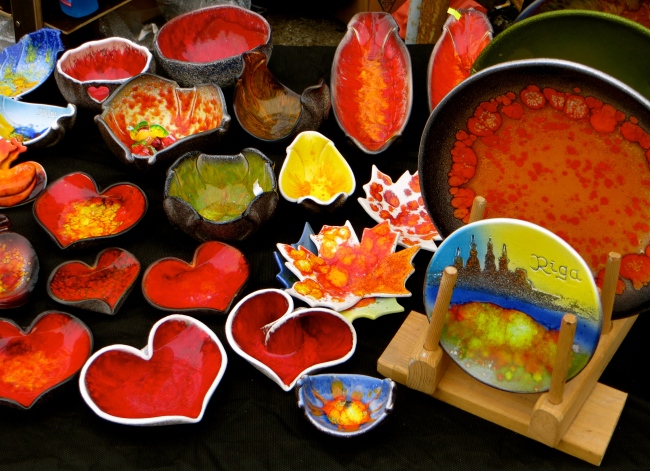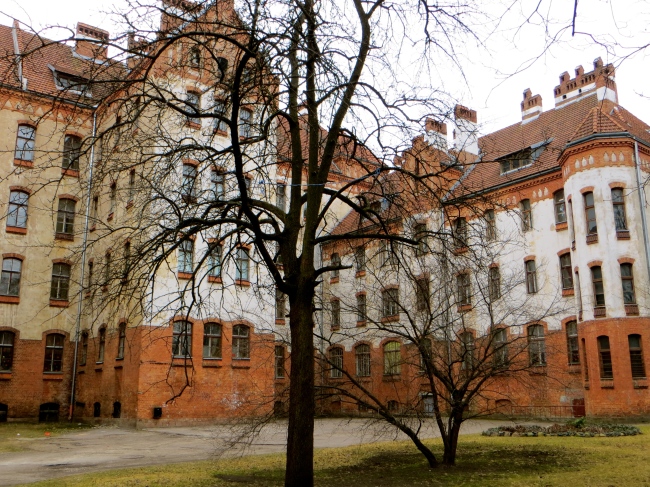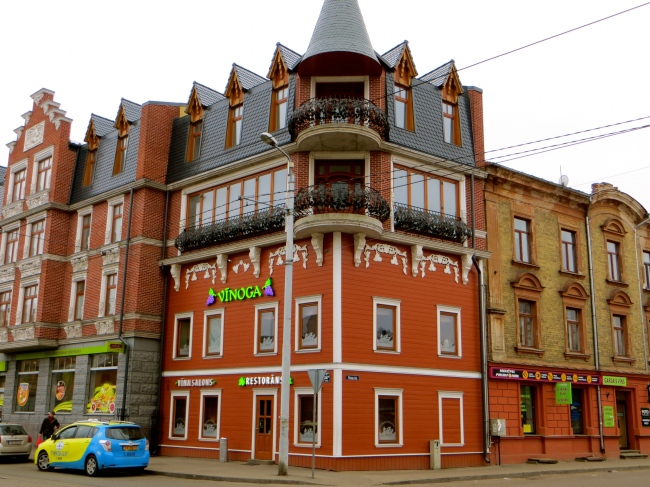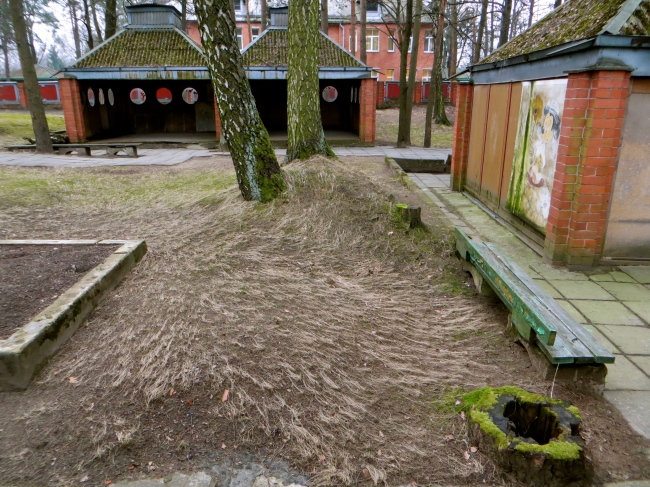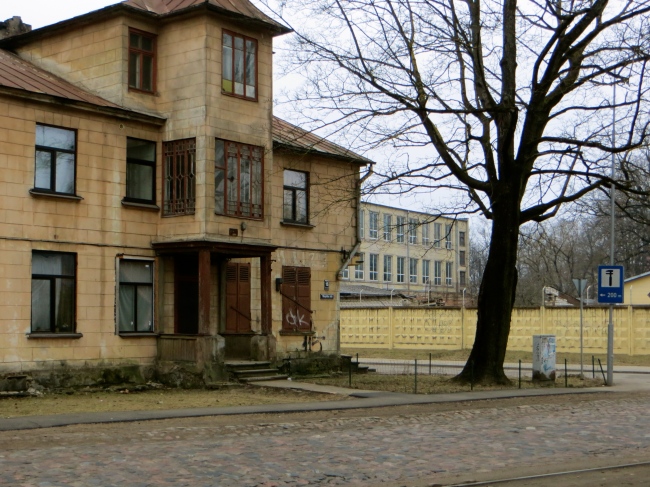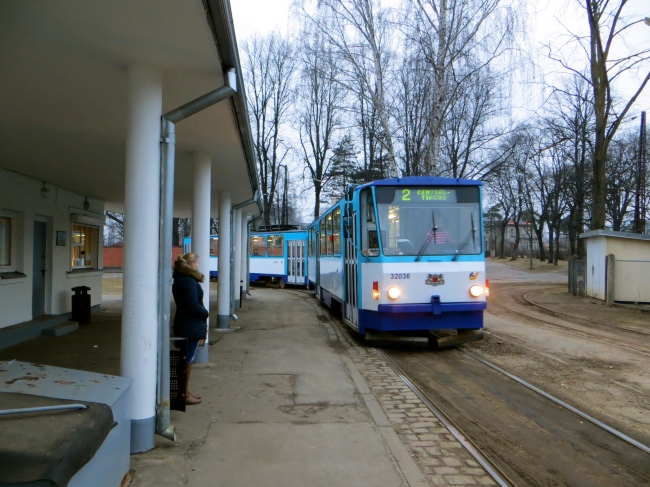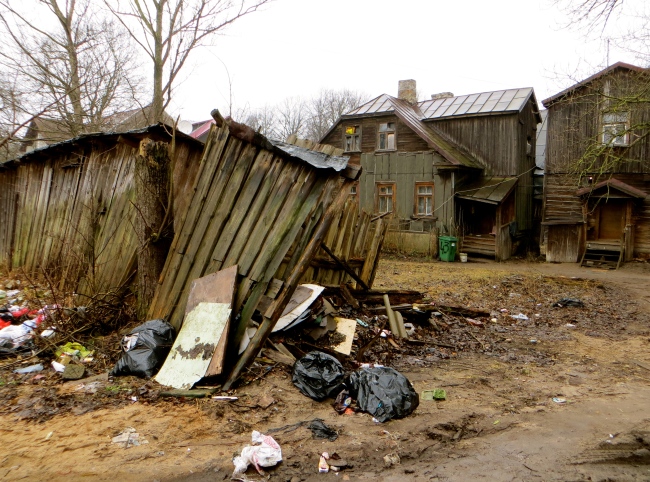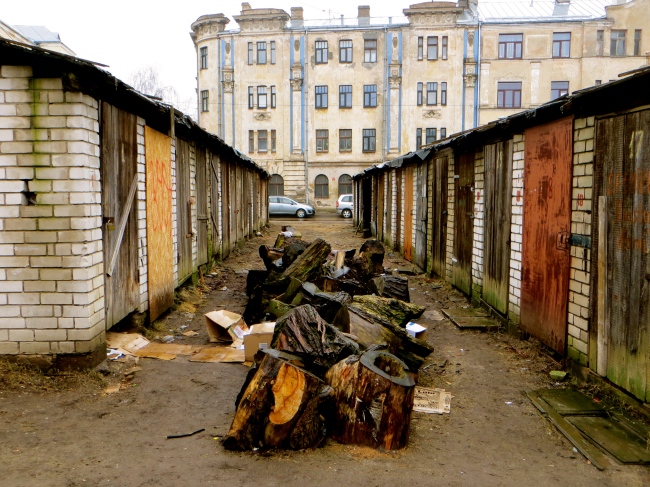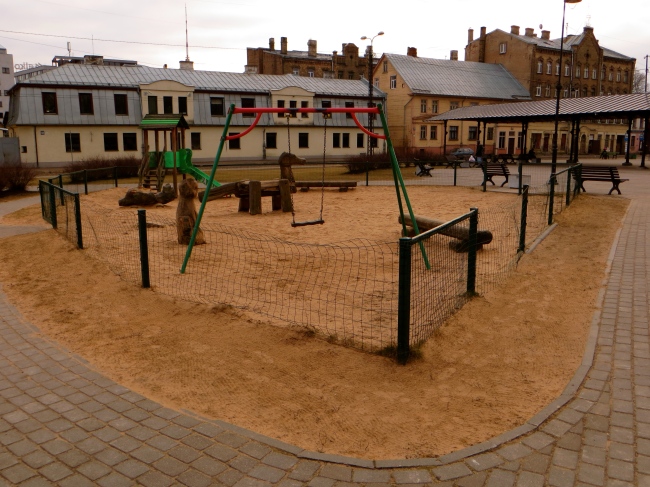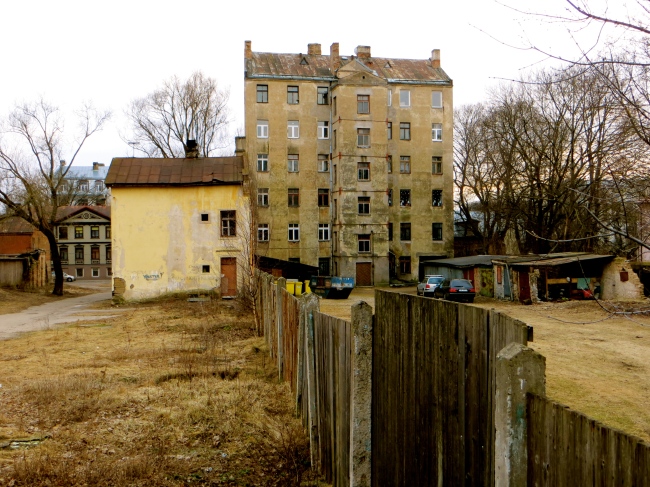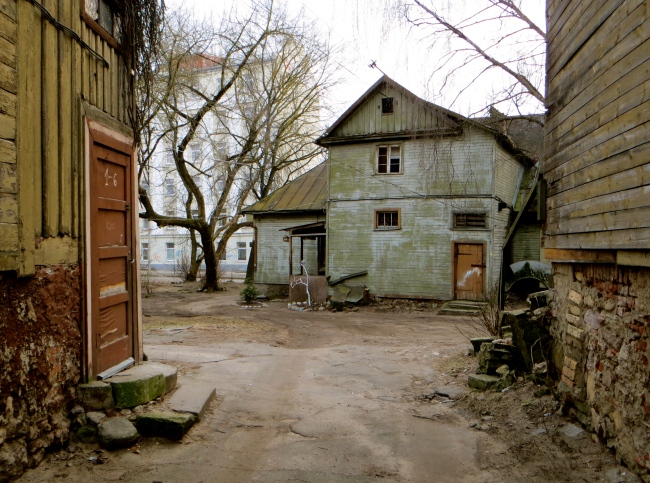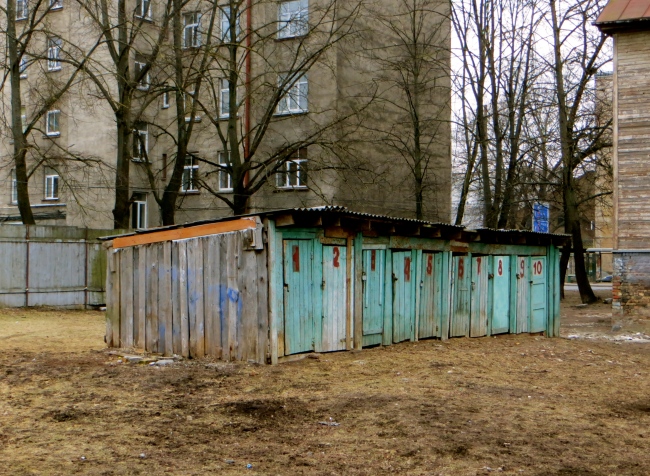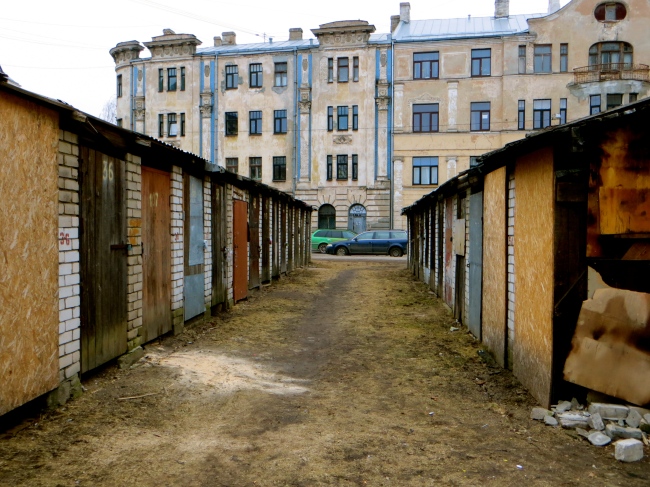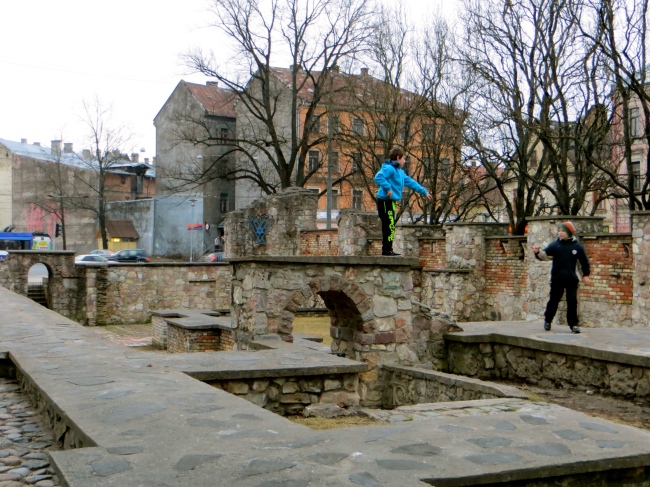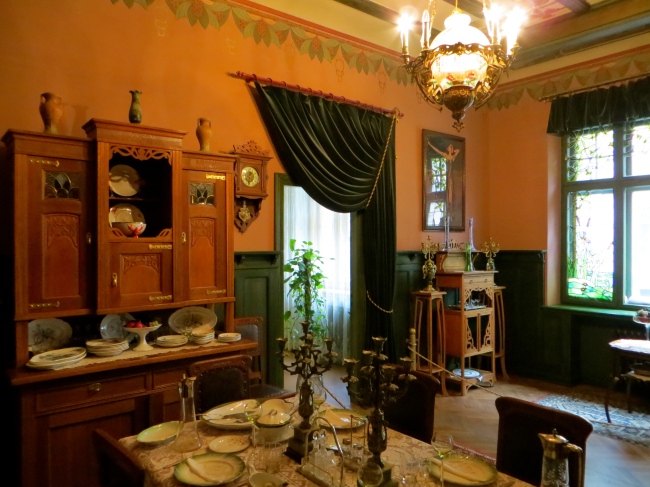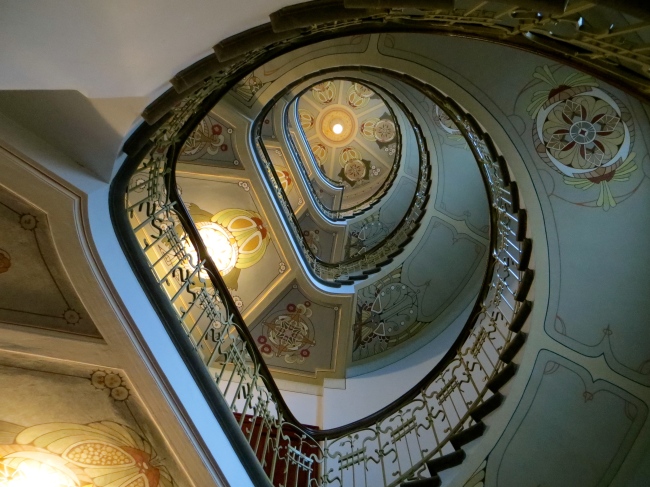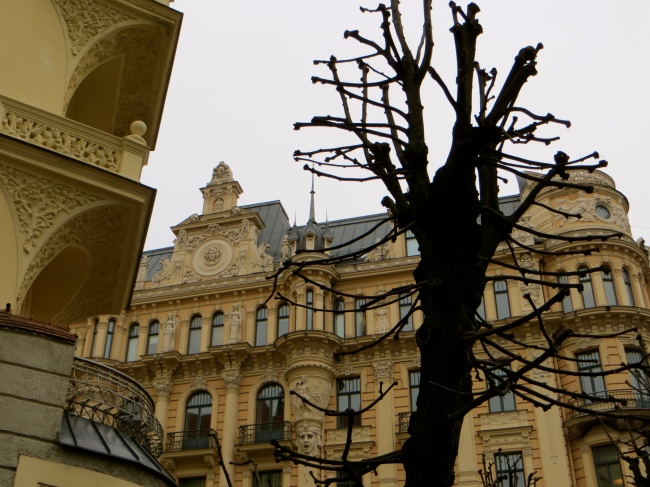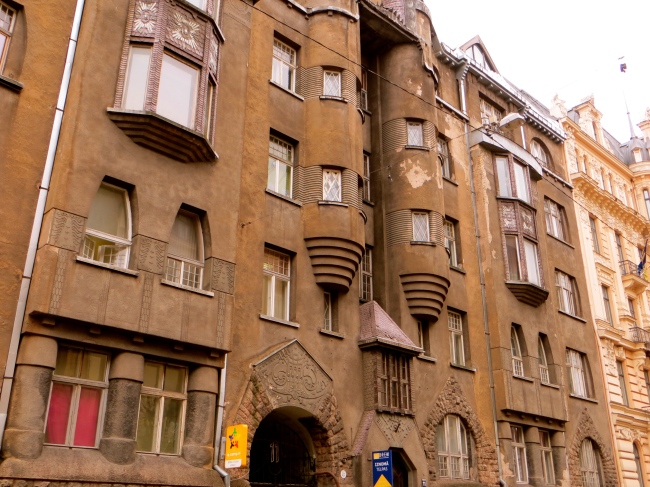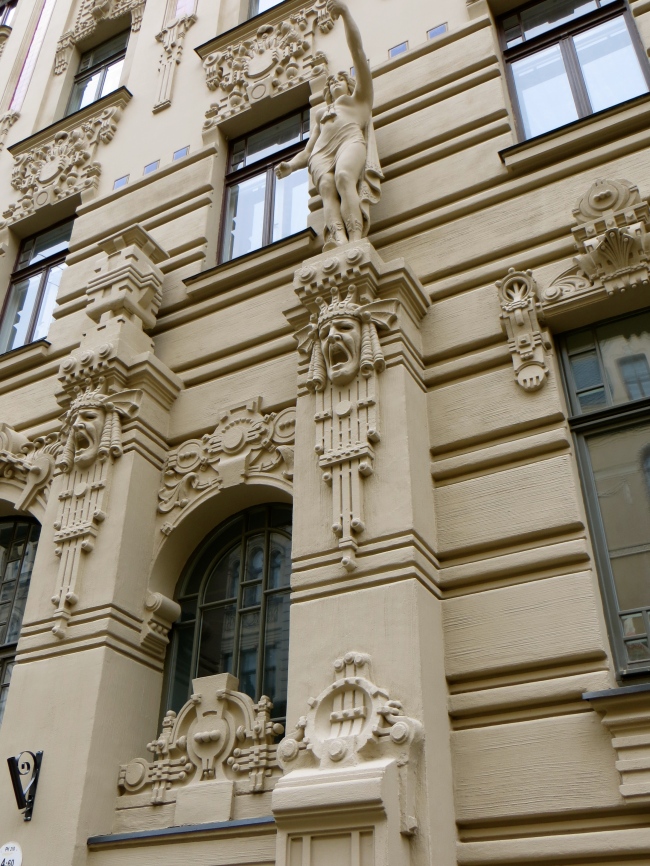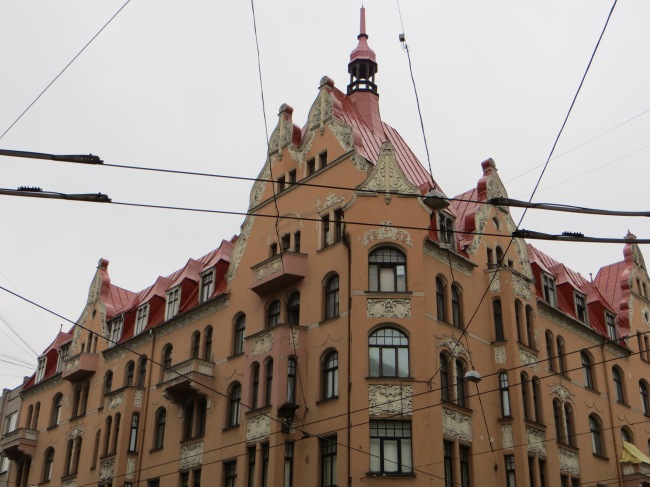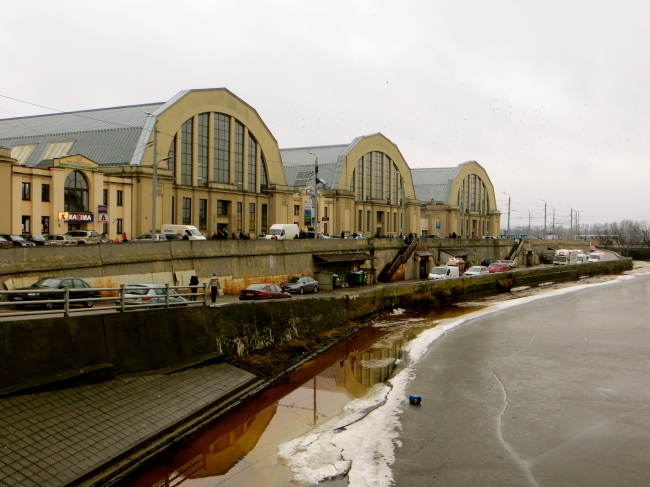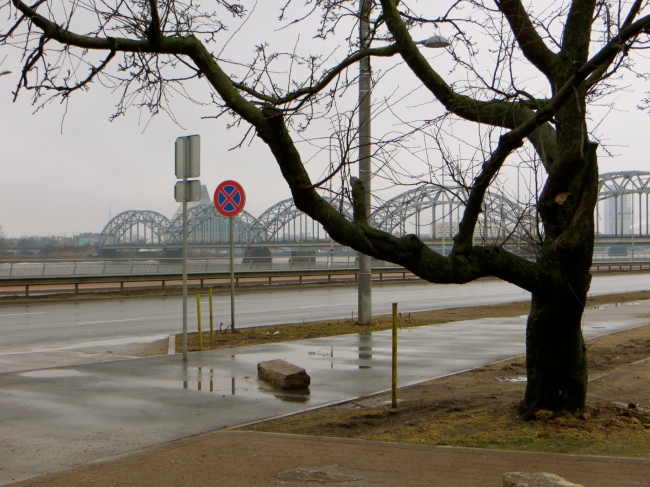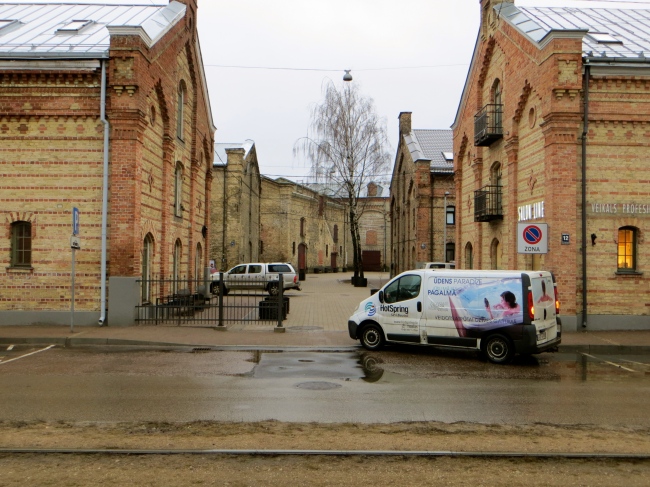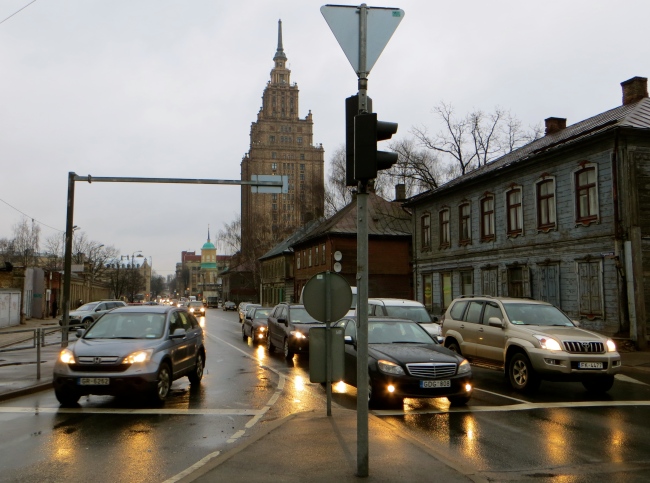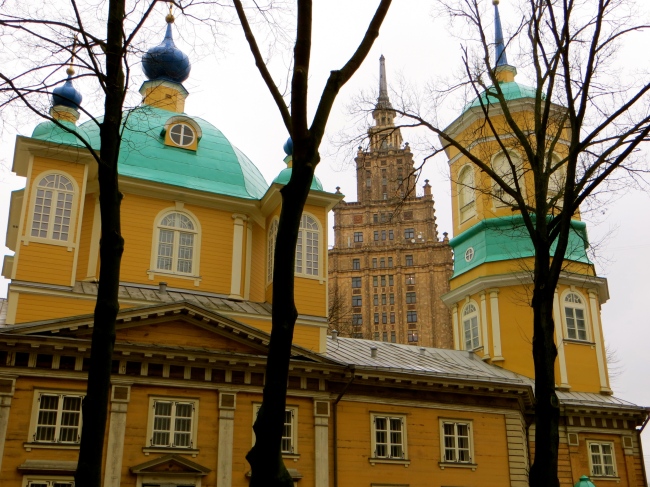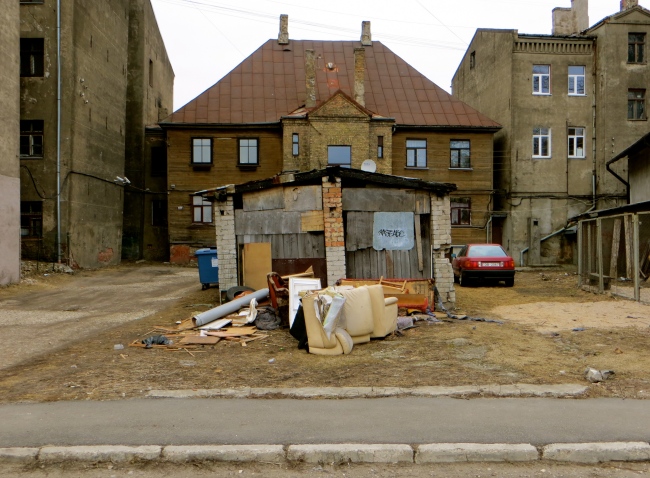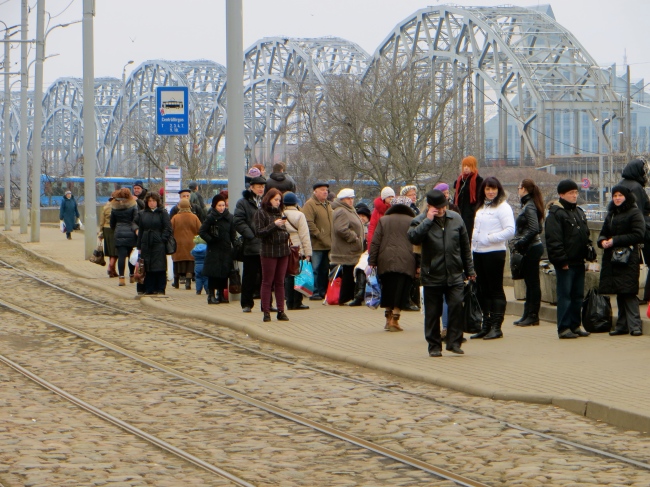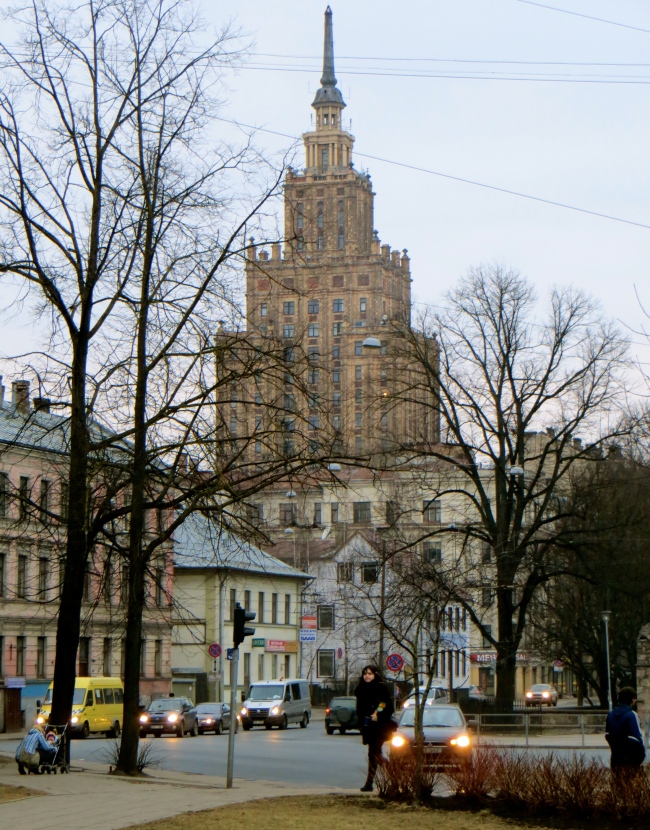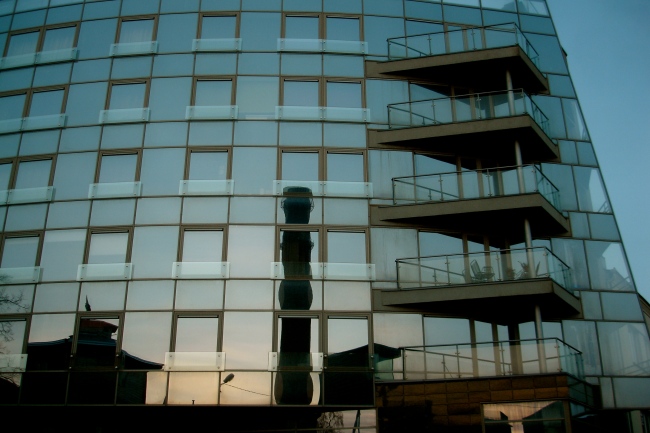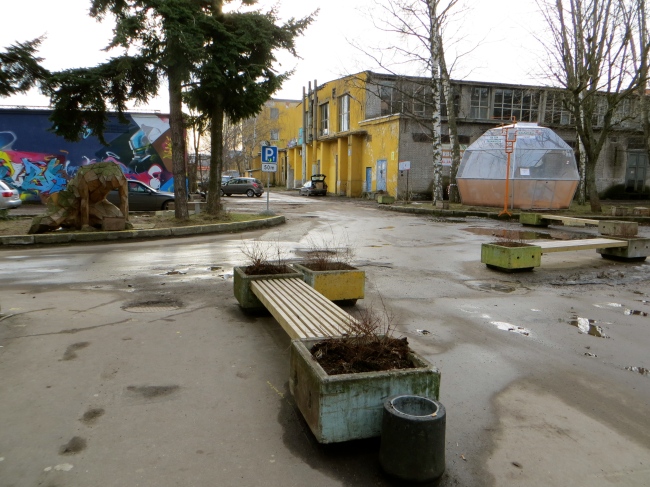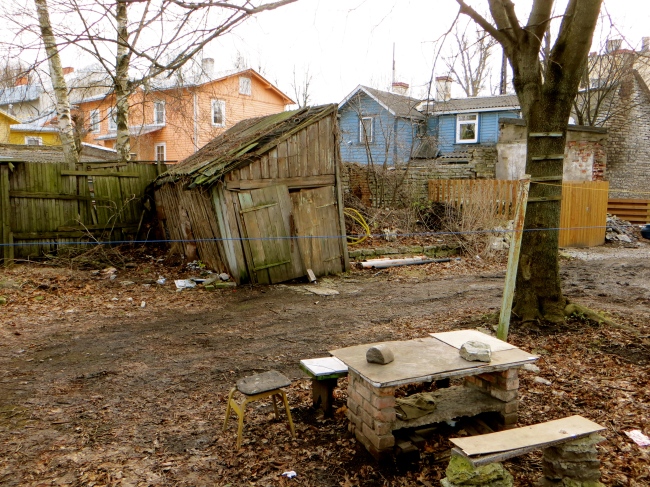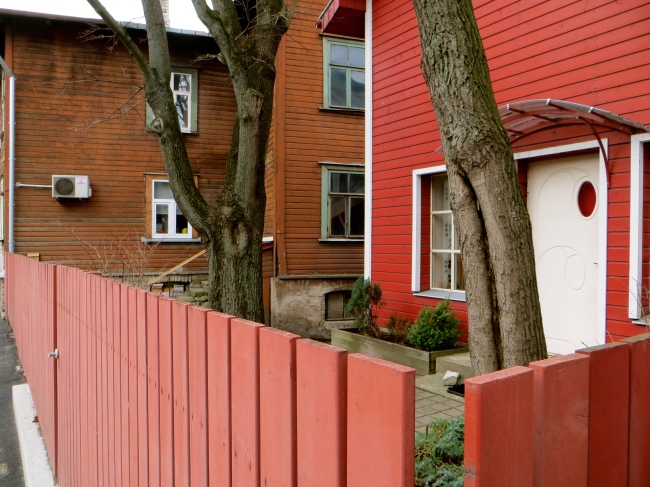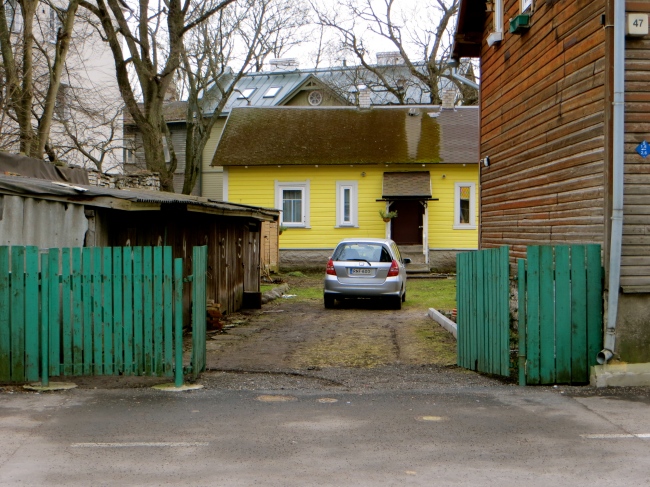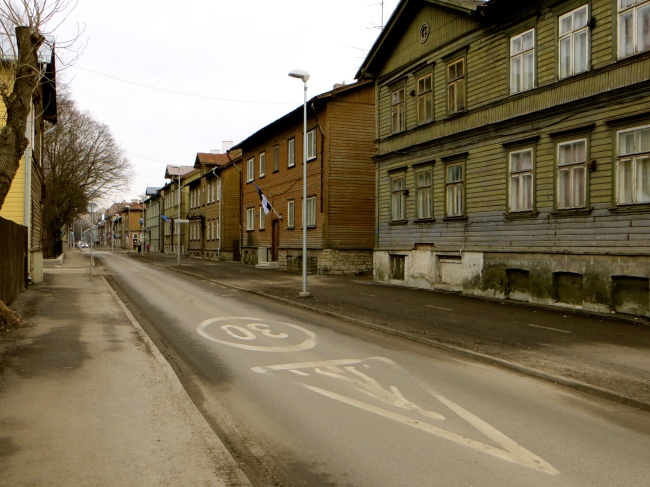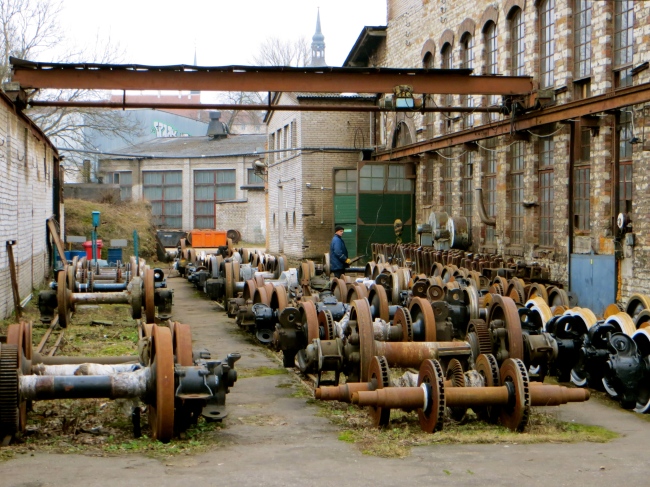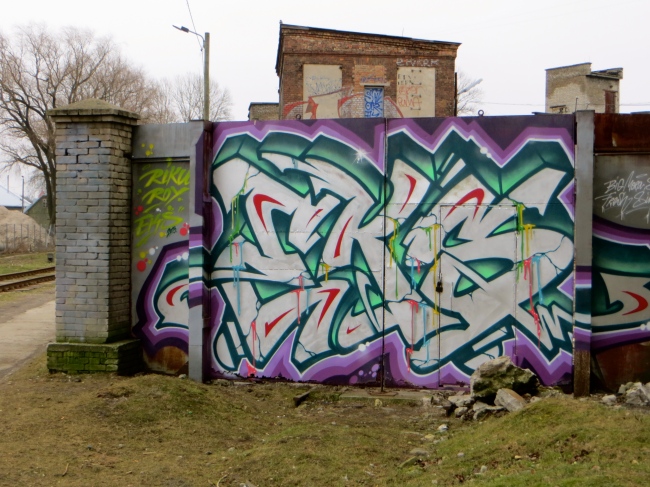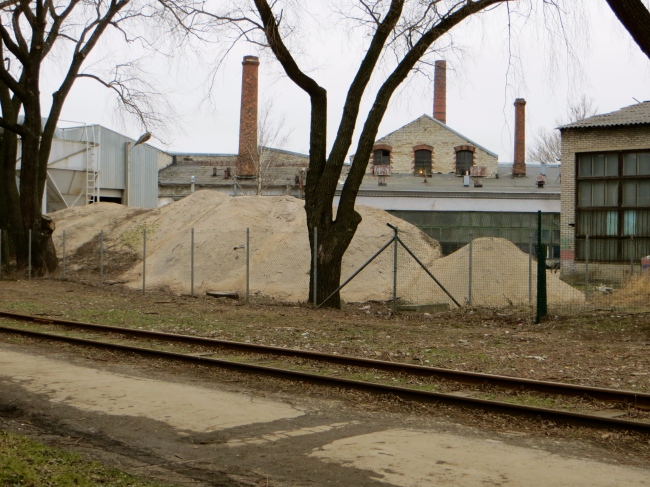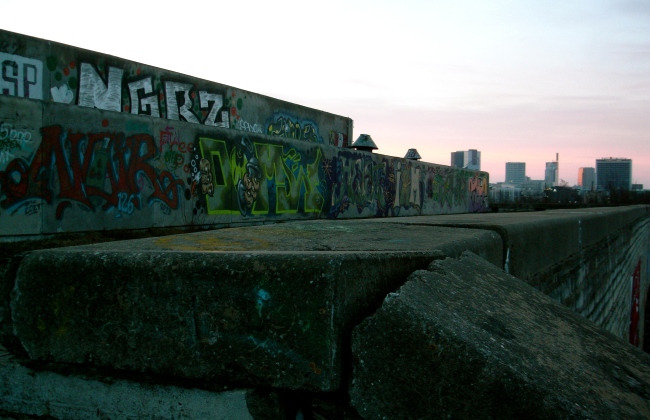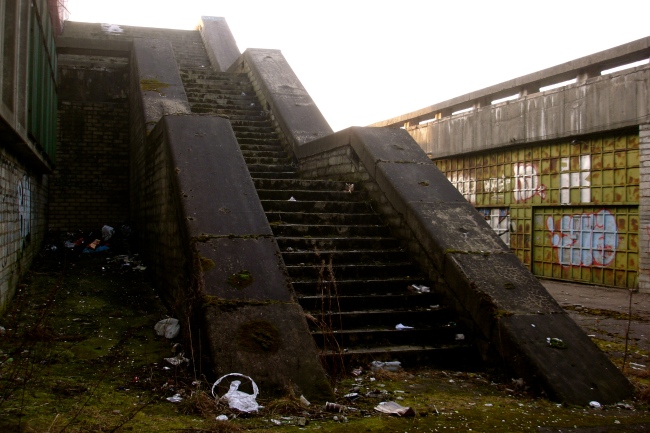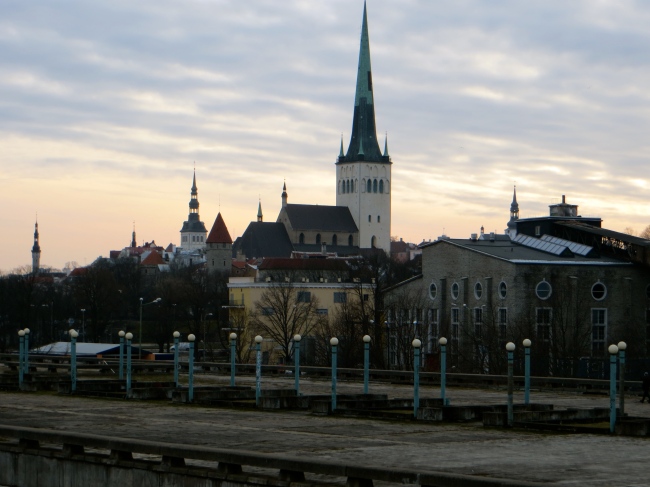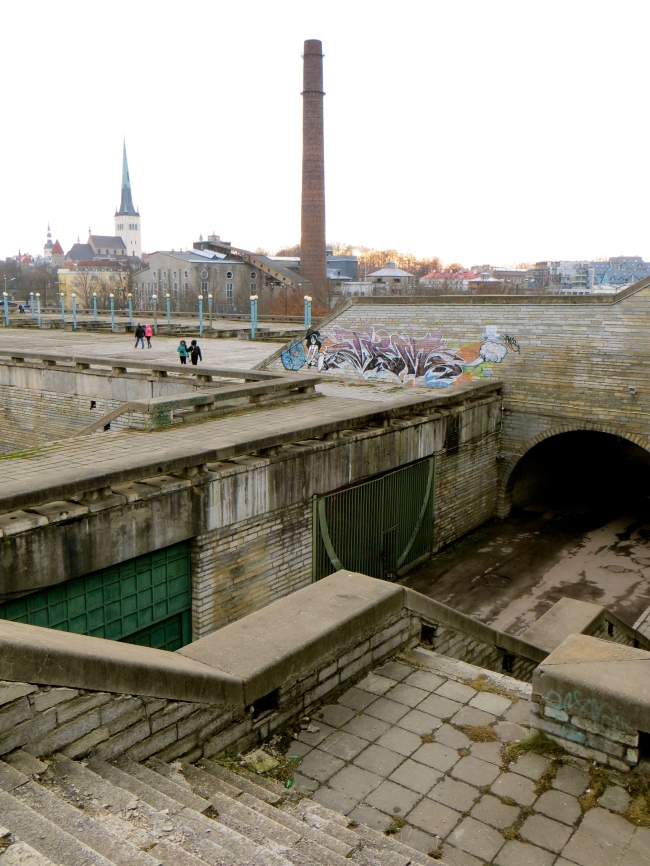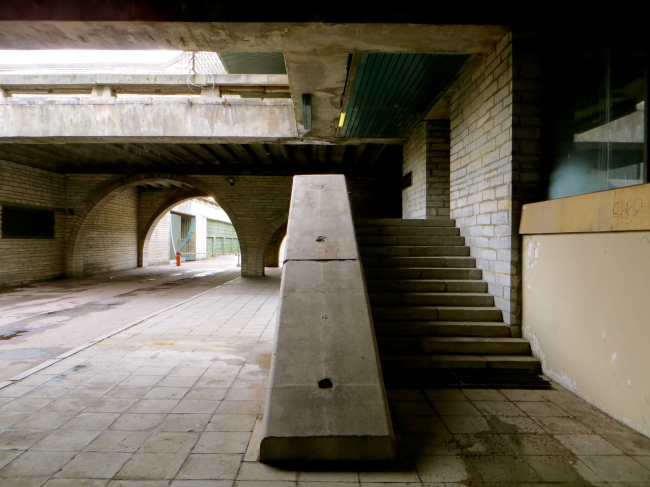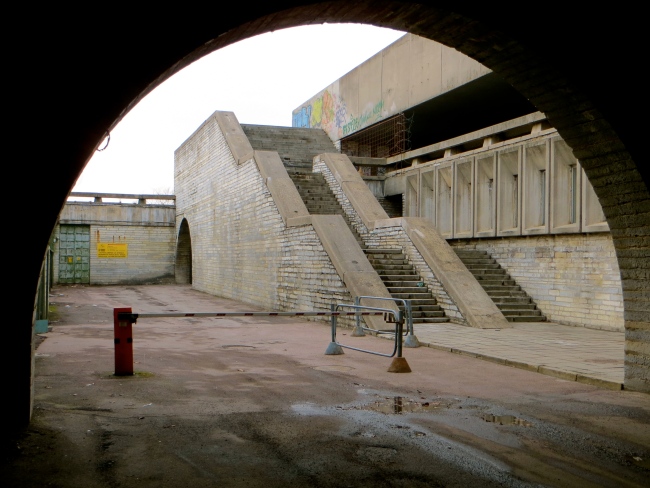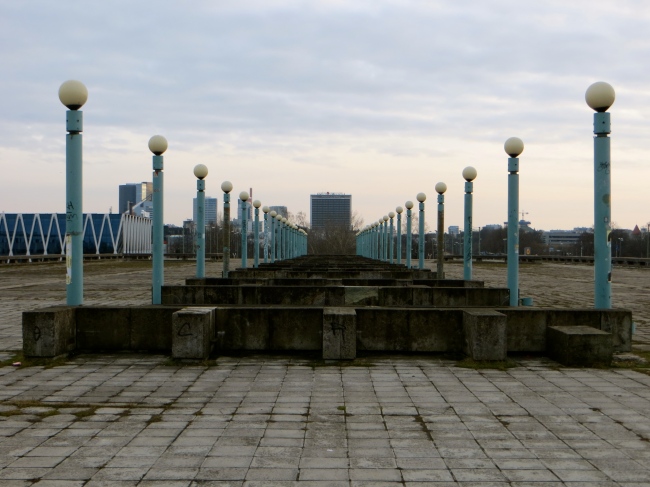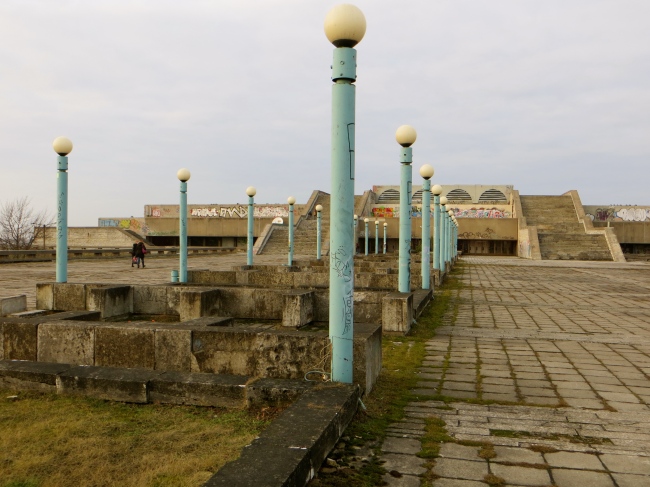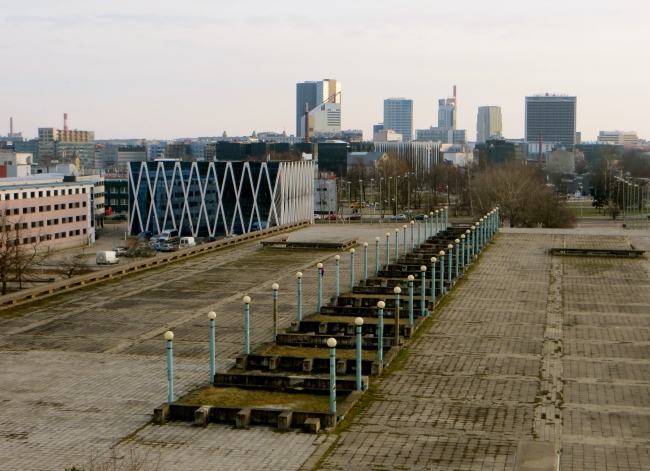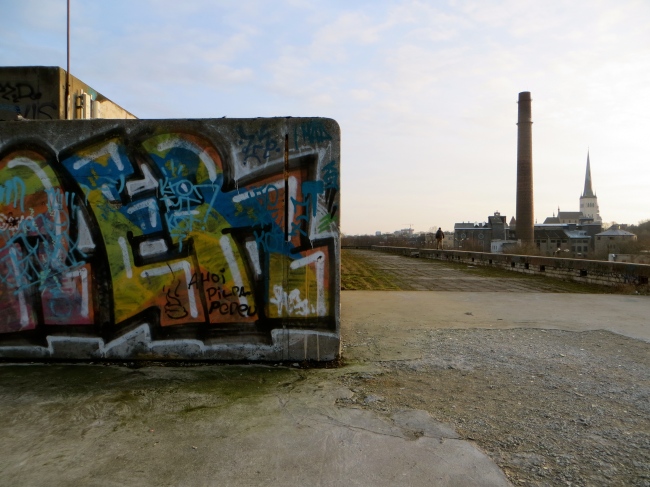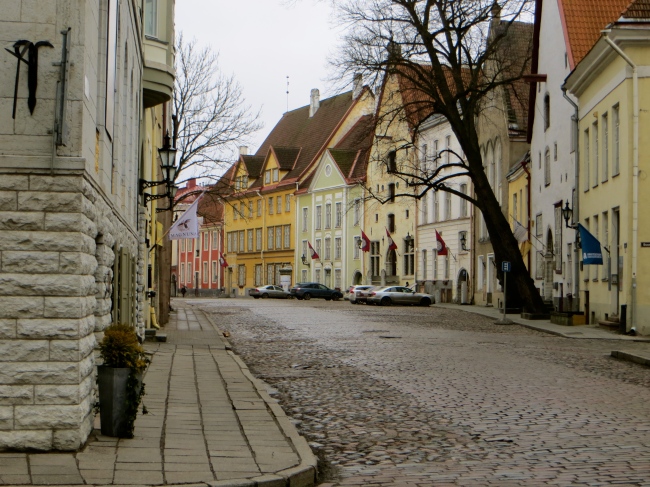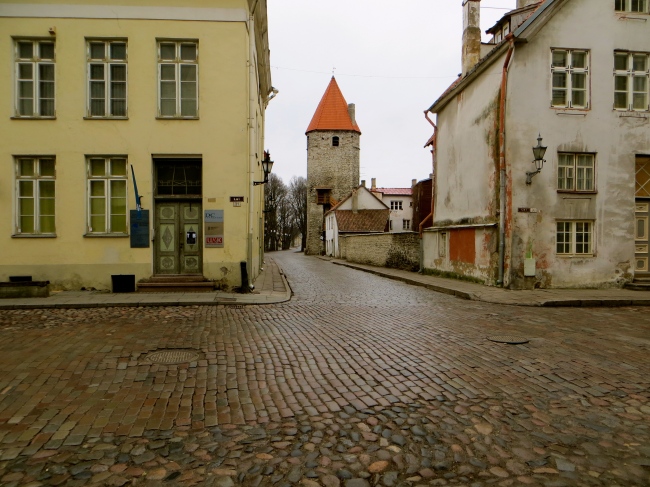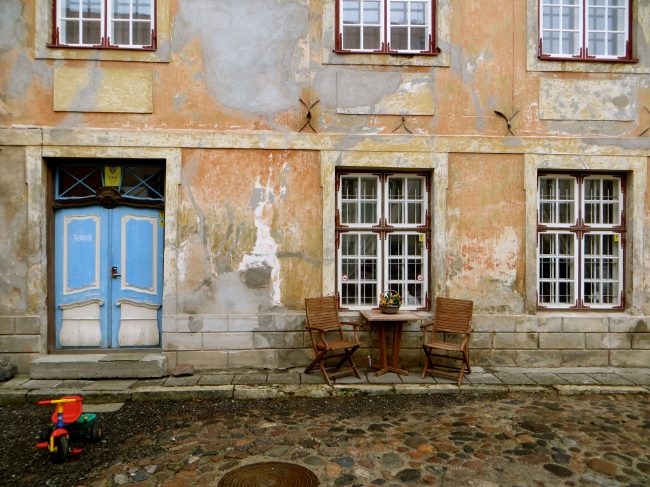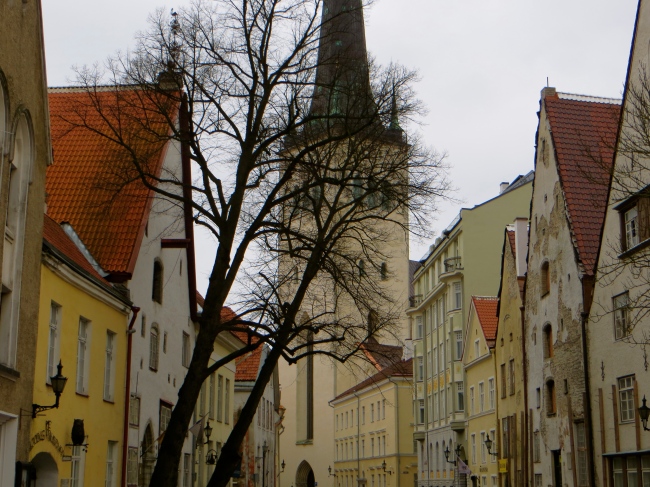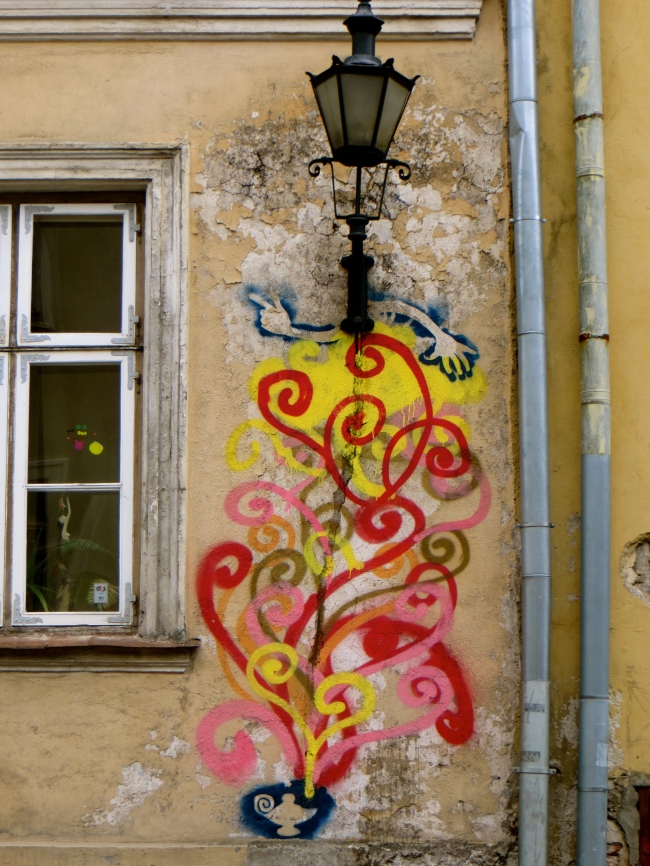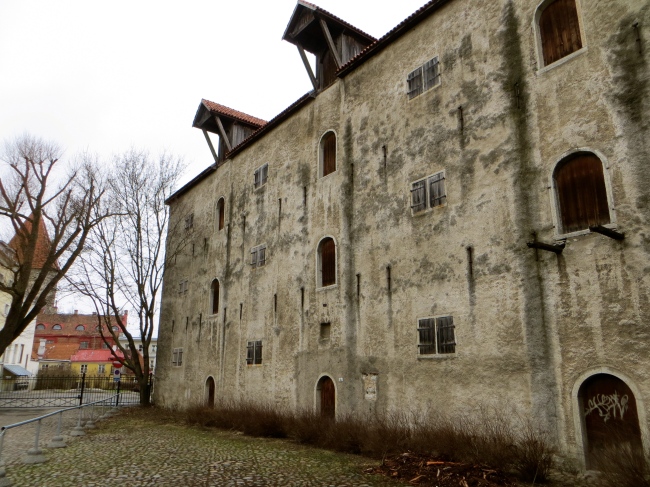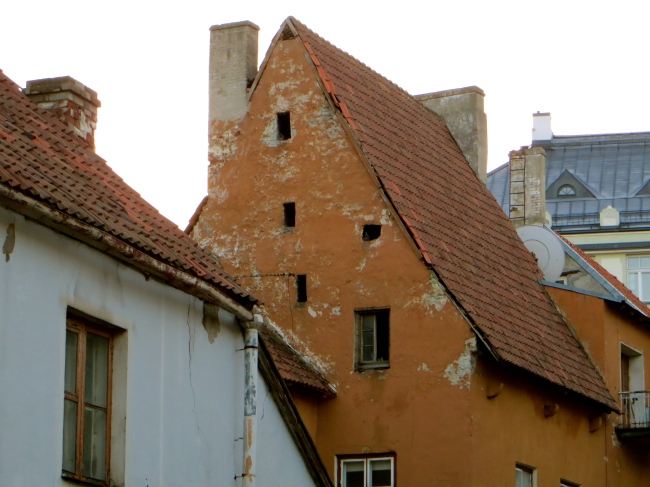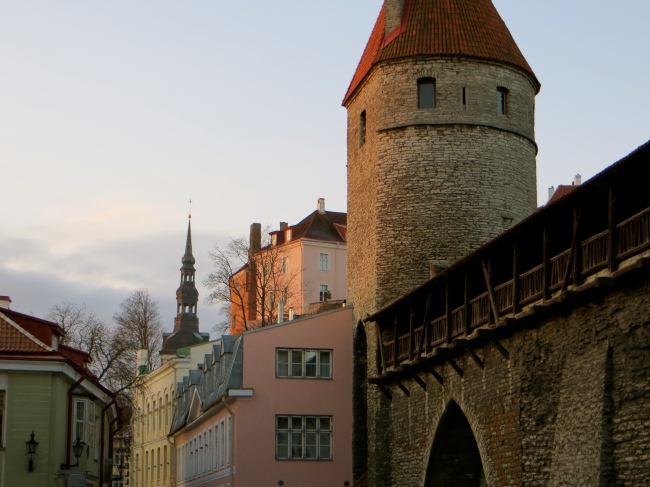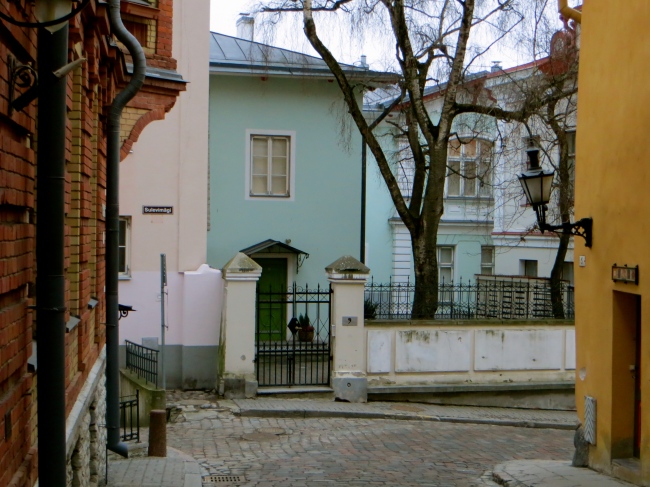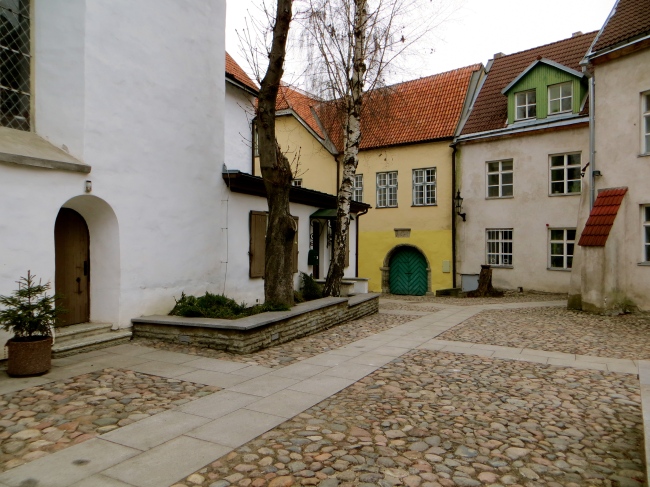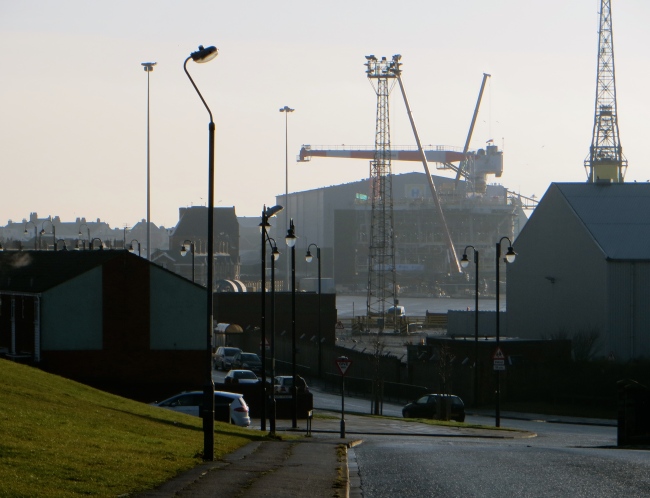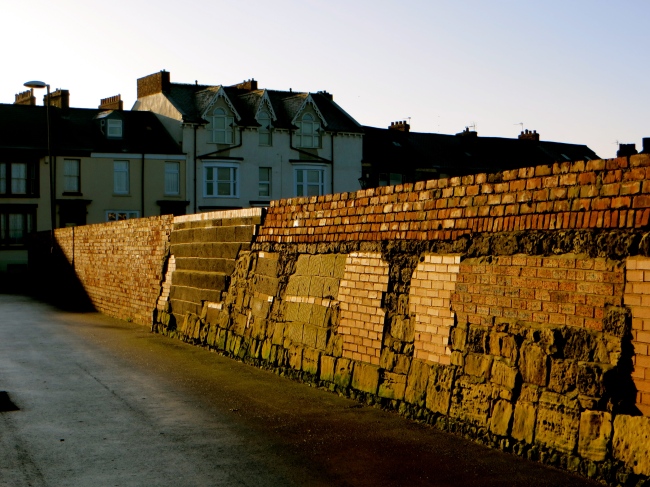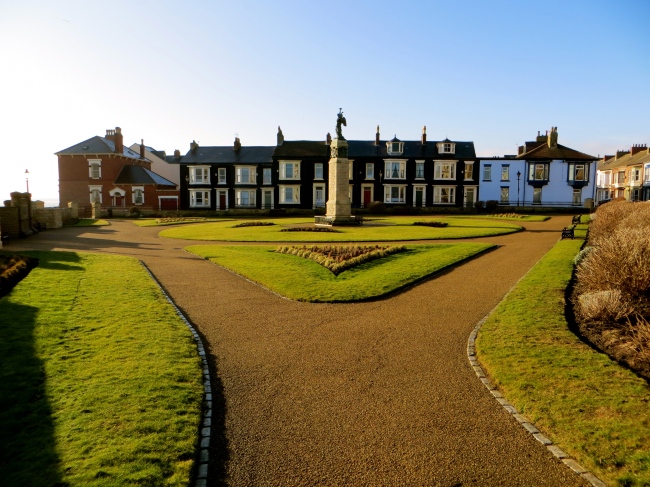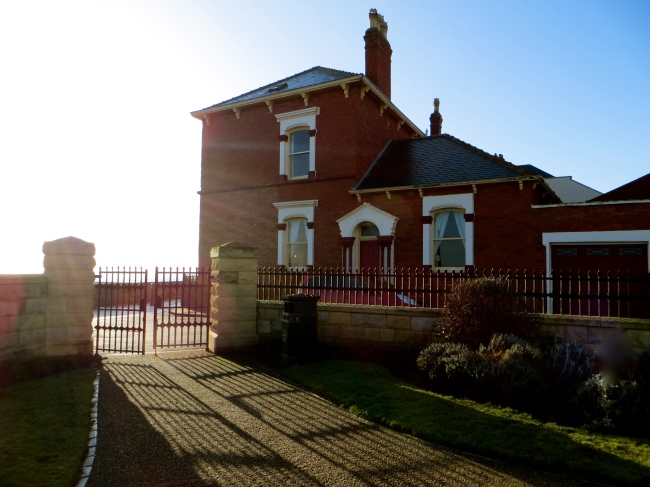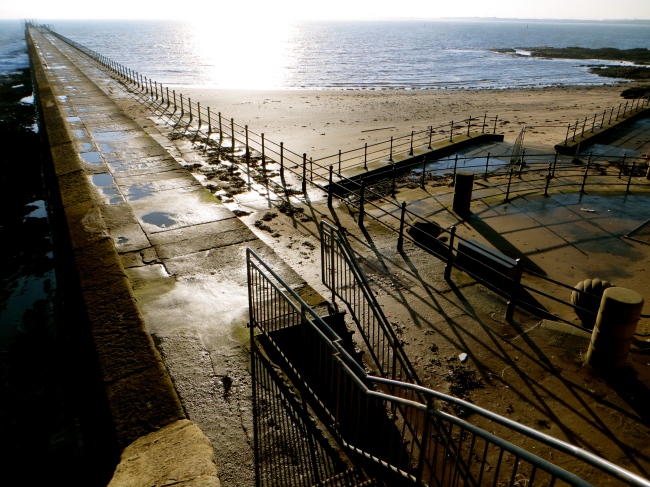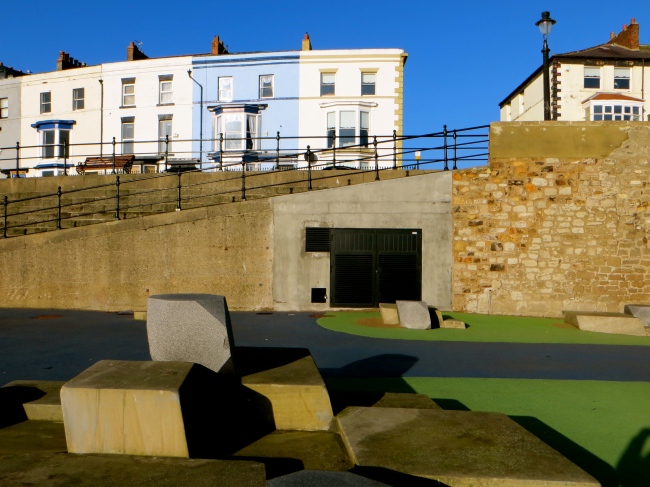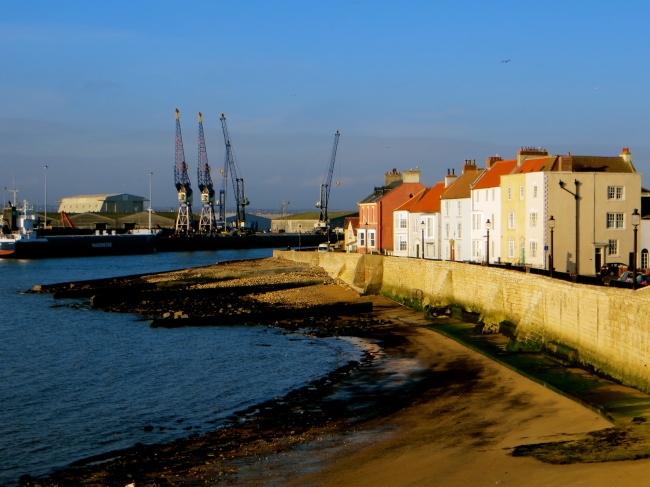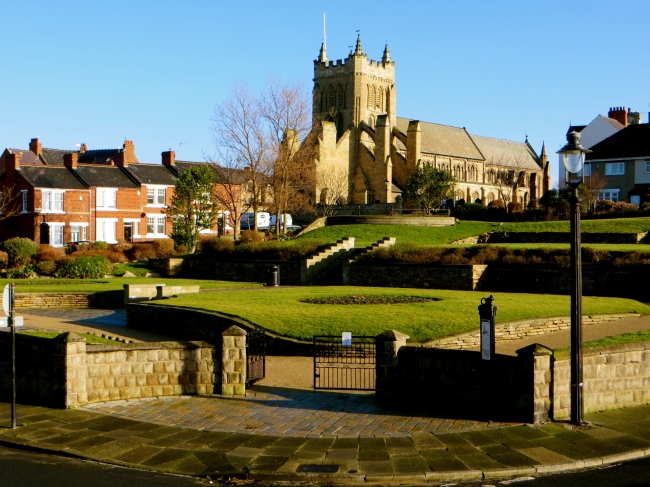In my estimation, an urban destination is significantly enhanced if it has trams, and Tallinn is lucky because it has four lengthy tram routes that carry passengers to some very interesting parts of the city. For my last post about Tallinn, I want to reveal what you can see if you take the tram from Telliskivi in Kalamaja to the terminus in Kopli. But first, some notes that provide context for the photos.
We returned to the tram stop at the north end of Telliskivi and took the number 2 to the end of the line in Kopli. The tram went through areas where housing mixed with industry, harbour facilities and a ship repair yard. Most housing was in Soviet-era apartment blocks about four storeys high. Although houses dominated the streets of Kalamaja and some old wooden houses existed in Kopli, the further we got from Kalamaja, the poorer most people seemed to be. When we arrived at the point where the trams turned through a half circle to return to the city centre, a massive stone building called the Estonian Maritime Academy blocked the view to the west. The academy was a vocational university.
We got off the tram in Kopli and walked to a small Russian Orthodox church built overwhelmingly with wood. Nearby, just across the railway leading into a harbour with restricted access, was a terrace of wooden houses overlooking the sea.
Kopli stood at the end of a peninsula overlooking the Gulf of Kopli to the south. To the north was a desolate sandy beach, which, the day of our visit in late February, disappeared from view under frozen sea water.
We walked along the main road to the tram stop before the Kopli terminus, noting that a kiosk and a small shop met the basic needs of the local people, a majority of whom now lived in Soviet-era apartment blocks half hidden among trees to the south of the main road. A few old wooden houses lurked among the trees and looked interesting enough to justify a return visit. But I knew I would have to be careful with my camera because some of the local young and middle-aged males seemed to be unemployed and were not always engaged in lawful activities.
Hilary rested in the hotel. I caught a tram to Kopli, but got off at Sitsi where there were excellent views over the ship repair yard mentioned earlier. The area around Sitsi had an interesting mixture of Soviet-era apartment blocks, wooden houses built at different times, breeze block and render houses of recent pedigree built for families that had benefitted from capitalist economics, patches of mud and grass overlooked by the apartment blocks, fenced-off yards full of wood and metal, rows of wooden huts and brick outhouses, and a few drab shops, bars and cafes. Damp had discoloured the brightly painted stucco walls and large wheelie-bins cluttered the open spaces behind the apartment blocks. Many inhabitants of the area were poor and some felt compelled to look for recyclable items in the wheelie-bins. Small groups of men loitered near the tram stops hoping to sell drugs to passersby. In the distance was a vast industrial complex, most of which was built with brick. The industrial complex looked abandoned, but some parts were used for storage purposes. Lots of muddy paths led among the trees and buildings, thereby providing people with the most direct routes from one place to the next, and many people used the paths to exercise their dogs (sadly, not all the owners picked up their dogs’ excrement).
I got onto the tram and broke the journey twice to briefly examine the immediate areas (I found environments similar to the one around the Sitsi tram stop, so the camera remained quite busy).
Keen to re-connect with Tallinn’s more gritty and edgy side, I caught a tram to Sitsi for another lengthy walk around the streets. By turning a corner not previously noted, new but interesting views opened up.
Areas of this nature with their wooden housing; ill-kept communal areas; washing hung on lines between rusting metal poles; garages, huts and outhouses constructed with wood and brick; and large but abandoned factories (the factory near Sitsi gleamed in the late afternoon sunshine. Shadow emphasised the brick patterns on the external walls) were fascinating places to visit. True, outsiders had to be careful where they pointed their cameras and everyone ran the risk of encounters with dogs’ excrement, barking dogs behind wire or wooden fences and men suffering from drug or alcohol addiction. But how else could people connect with a city’s more marginal delights?
I walked Hilary back to the hotel but was out almost immediately, one last visit to Kopli my intention. I tried to get into the harbour behind the Estonian Maritime Academy, but only people with passes or goods for transportation could proceed beyond a barrier across the road. Instead, I looked at trams parked in a shed beside the academy, then walked in a south-easterly direction through some trees and over very damp ground ineffectively drained by ditches and shallow pools of stagnant water. Some very large wooden houses stood among the trees, as did a few Soviet-era apartment blocks a little further away.
As I took a few photos of the wooden houses, a woman approached me with a wary expression on her face. She was walking four of her dogs with her daughter aged about 15. Once the woman had been reassured that I was not up to mischief, we had a chat about Kopli in the past. She said that Kopli had once been a small village detached from Tallinn a few kilometres to the east. Between the two world wars, the building which was now the Estonian Maritime Academy was constructed as Tallinn University’s science faculty and, following its inauguration as a teaching and learning facility, academic staff built themselves wooden houses among the surrounding trees so they could live close to where they worked (my informant insisted that some of Kopli’s surviving wooden houses once belonged to the academics. She said they had been in much better condition in the past). She also said that Kopli remained a village until “Krushchev built his houses in those blocks over there”. She pointed through the trees toward some of the apartment blocks with their discoloured stucco peeling from the brick below.
“Krushchev’s houses. His houses ruined the village and brought in many Russians from far away to work in the harbour and local factories. The growth in the number of people and the changing nature of the population led to a lot of heavy drinking, domestic violence and other crime. But, for the last two years in July, people in Kopli have organised events, a sort of festival to celebrate the history of the area and to encourage people to take greater pride in their community. With a little effort, Kopli can be beautiful and peaceful again.”
I agreed with the woman about Kopli’s future prospects. In fact, Kopli was fascinating, which was why I had come back. I continued walking around for another half hour, on this occasion concentrating on the south side of Kopli overlooking the gulf with the same name.
